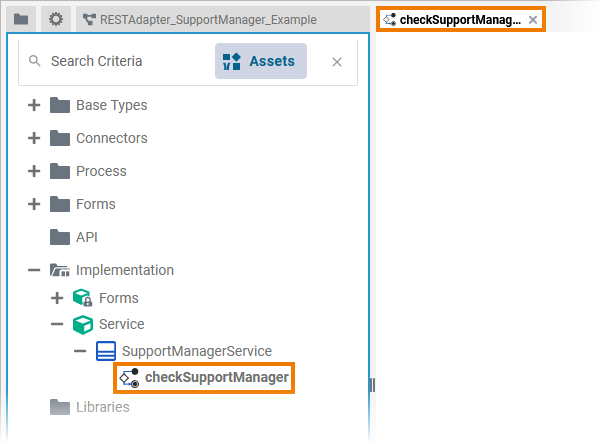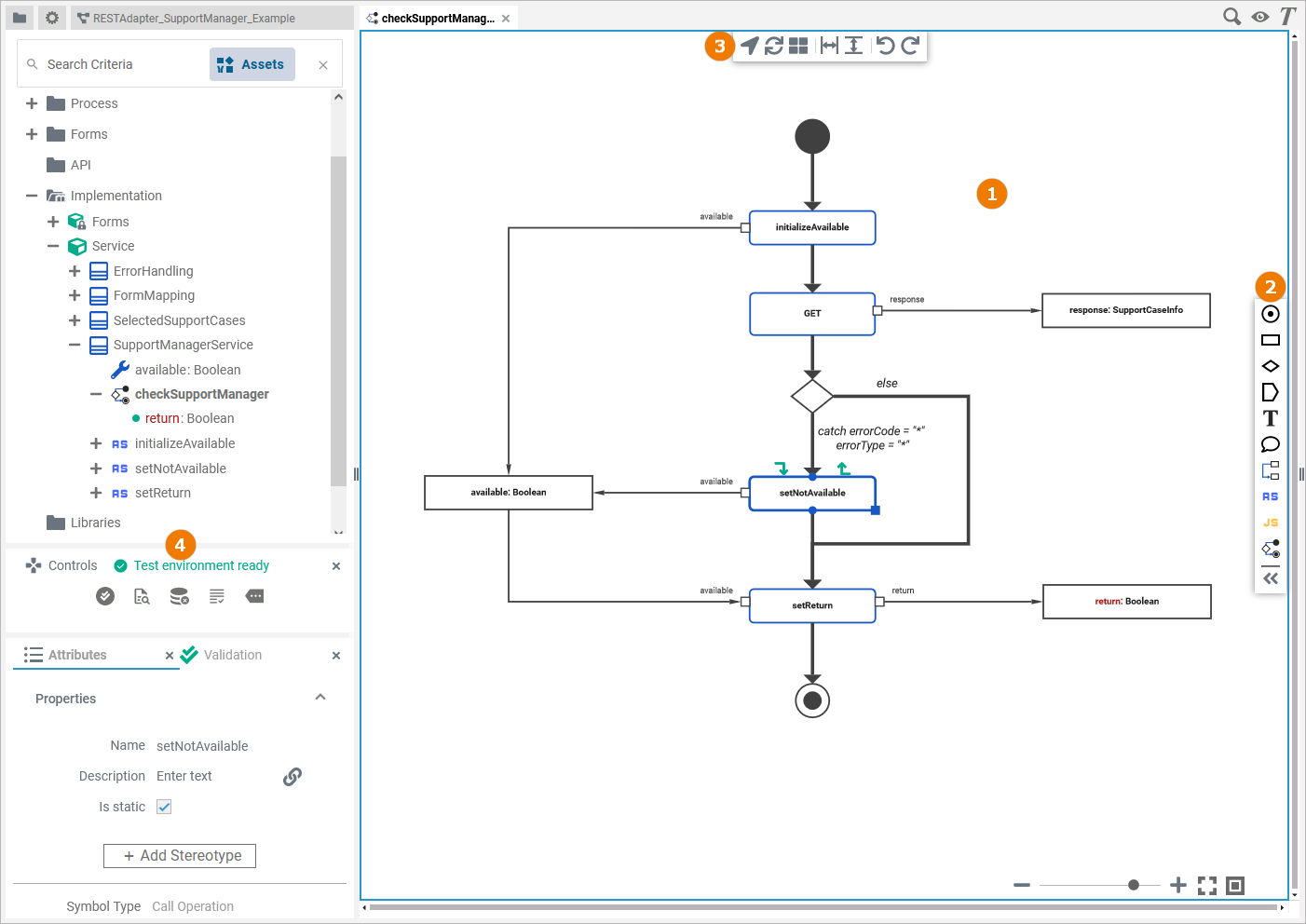Modeling Activities
Using the Designer, behavior of classes can be defined by modeling an UML activity diagram.
Adding an Activity Operation
From the quick actions of a class, select Add Activity Operation to add an activity operation:

Enter a name for the operation and click Save:

A BPMN model name must be unique within one service.
In addition, the following name restrictions apply to all service panel elements:
Element names...
... must not be empty.
... must not contain spaces. Exception: Spaces are allowed in operation names.
... must not start with numbers.
... must not end with a period (.).
... must not contain one of the following characters: <, >, :, ", /, \, |, ?, *
Furthermore, the following strings must not be used as element names: CON, PRN, AUX, NUL, COM1, COM2, COM3, COM4, COM5, COM6, COM7, COM8, COM9, LPT1, LPT2, LPT3, LPT4, LPT5, LPT6, LPT7, LPT8, LPT9.
Alternatively, you can open the context menu of the class and select the option Add Operation:

The dialog Add Operation opens. Select Activity Diagram from the drop-down list, enter a name for the operation and click Save:

The new operation is added to the class. It opens automatically in a new Designer tab, and you can directly start modeling your activity:

Refer to Working with the Activity Editor for detailed information.
Once the operation has been created, you can use the quick actions and the context menu to manage it:

You can:
add parameters
in
out
return
open the implementation of the activity diagram
change the implementation from activity diagram to action script or mapping diagram
cut the operation
copy the operation
paste the operation (available if Copy or Cut option have been used before)
rename the operation
delete the operation
Refer to Implementation and Modeling Data Structures for more information on your options and how to create classes and operations.
Overview on the Activity Diagram Editor
When you create a class operation that is implemented by an activity diagram, the activity diagram editor opens:

Use the various functionalities of the activity diagram editor to model your activity:
Name | Description | |
|---|---|---|
(1) | Activity Editor | The activity editor is where you model your activity diagram. |
(2) | Elements Toolbar | The elements toolbar contains all UML elements that you can create on the diagram pane. |
(3) | Model Toolbar | The model toolbar assists you during modeling on the diagram pane. |
(4) | Designer Panels | In the activity diagram editor, the following panels assist you during modeling:
|
Attributes of an Activity Operation
Select an activity operation in the Implementation folder of the service panel to display its attributes in the Attributes panel. You can also edit them there:

Activity operations have the following attributes:
Attribute | Description | Possible Values / Example | |
|---|---|---|---|
Name | Click here to change the Name of the related operation. Activity operation names must follow certain naming rules. They
| checkSupportManager | |
Description | If you want to insert or change a description for the respective activity operation, click here to open a text editor where you can enter and format your text. | ||
Is static | Specify if the operation is static (default) or not.
For more information, also refer to Adding Operation Calls. | true | The activity operation is static (default) and can be used outside the context of the related class. |
false | The activity operation is non-static and needs a self object as an input. | ||
Stereotype | Via button Add Stereotype, you can add a stereotype to an activity operation. | REST | |
Attributes of an Activity Diagram
When you click on the diagram pane in the Activity editor, the following attributes of the current activity diagram are displayed in the Attributes panel. All attributes are read-only and cannot be edited:

Attribute | Description | Possible Values / Example | |
|---|---|---|---|
Name | Displays the name of the current activity diagram. | checkSupportManager | |
Type | Path within the implementation folder where the corresponding activity operation resides. | Service.SupportManagerService | |
